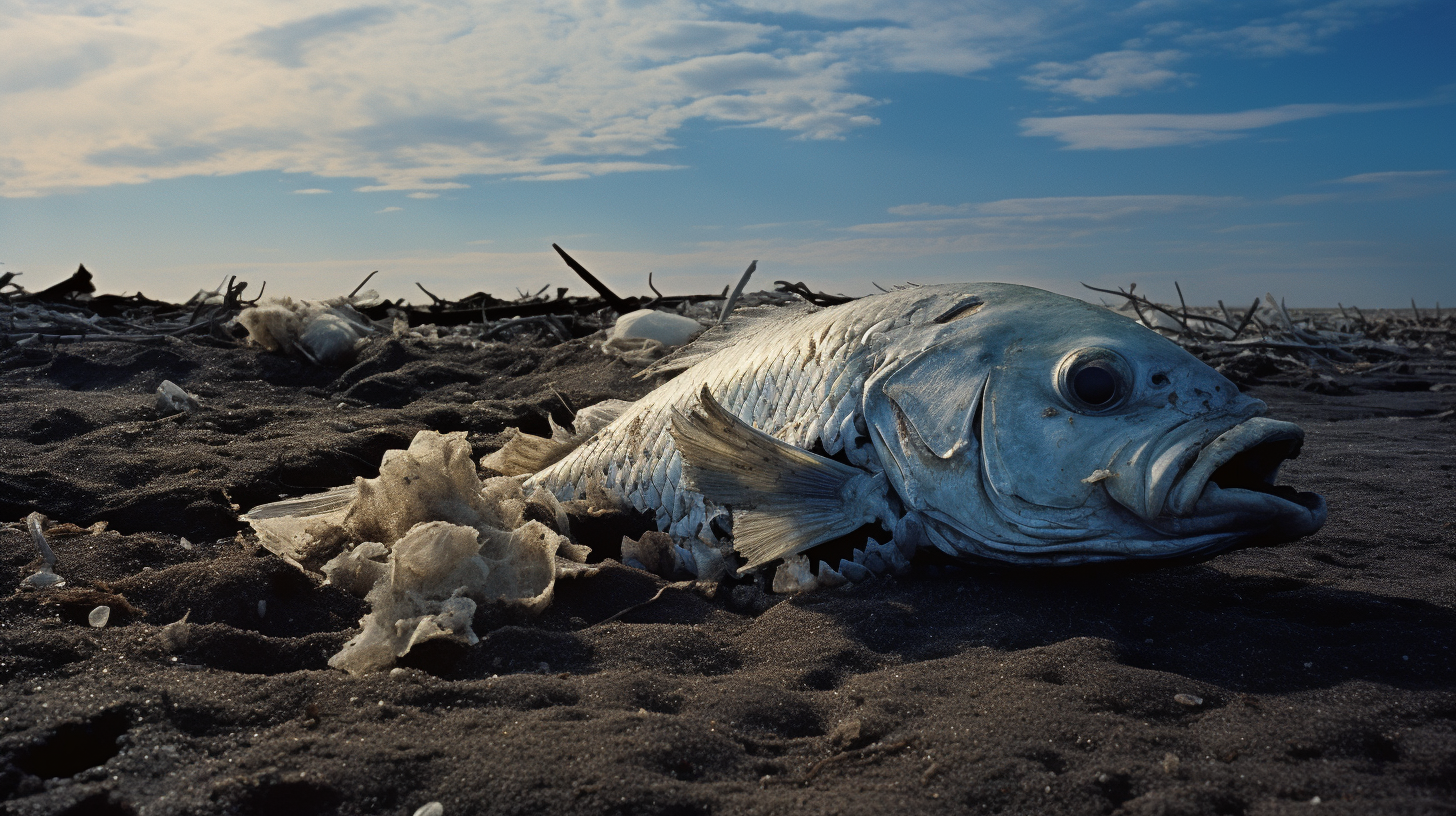In an age where the whispers of once teeming oceans echo into silence, the story that unfurls is one of absence, an eerie void where life beneath the waves used to bustle. It’s the tale of fish stocks that have simply vanished, victims to a relentless siege of human-caused calamities.
Across the globe, coastal communities stand at the brink, staring out over barren seas that have not only been stripped of oxygen and soured by acid but now, most starkly, are devoid of fish. The nets cast come back hauntingly empty—a stark contrast to yesteryear’s bountiful hauls. Those marine creatures that once dazzled us with their colorful diversity now linger only as memories in the few, the elderly who recount stories of seas abuzz with life.
‘Where did we go wrong?‘ is a question that pries its way into discussions, no longer hypothetical but laden with the heavy guilt of recognition. It is as if, in our zeal for expansion and exploitation, we’ve crossed invisible thresholds in our seas, overlooked by policies and governments, leading to a cascade of environmental insolvency.
We now understand the impacts of the dual forces of anoxia and acidification—topics we’ve previously dissected with morbid curiosity, depicting an apocalypse of marine life gasping for breath and the gradual dissolving of shells and skeletons. This once distant future, analyzed in ‘Oceans Gasping for Air – The Plight of Marine Life Amid Anoxia’ and ‘Acid Seas – The Devouring of the Depths’, has surreptitiously crept upon us.
The domino effect has been inescapable, leading from one calamity to another. Altered ocean currents and warming waters pushed species to the brink; those that didn’t succumb to the lack of oxygen or corrosive waters faced the empty abyss of their food chains. As predators disappeared, the populations of prey skyrocketed, only to collapse under their own unsustainable boom.
And now, we report on the vanished fish. Scientists raise alarms, conservationists weep, and fishermen abandon their trade—not out of choice but because the seas yield no life. We’ve become curators of an aquatic museum, a collection of what was, not what is.
To address this calamity, we must confront the uncomfortable truth we’ve been dancing around. This isn’t just about managing fisheries better or setting up marine sanctuaries. Such actions, while laudable, might have made a difference when there was something left to save. The decline we’re chronicling signifies a sadder truth—we’ve passed the tipping point where reactive measures could have altered the course.
Perhaps it’s time to look forward and ask ourselves: What comes next? Oceans may be resilient, but they have their limits, and we seem to have found them. What remains is a stark canvas upon which humanity will have to sketch its uncertain future.
